#native plants of Ontario
Text
Native Plants I’ve Actually Seen Growing Wild in Southern Ontario
Acer saccharinum (silver maple) --along the sides of highways
Acer saccharum (sugar maple) --GTA ravines
Achillea millefolia (yarrow) --GTA ravines
Allium schoenoprasum (wild chives) --GTA ravines, Ridgetown
Allium tricoccum (ramps) --Niagara region escarpments
Amaranthus retroflexus (redroot amaranth) --fallow areas in the GTA
Ambrosia artemisiifolia (ragweed) --fallow areas in the GTA
Ambrosia trifida (giant ragweed) --parks in the GTA
Amelanchier spp. (saskatoon/serviceberry) --GTA ravines
Arisaema triphyllum (Jack-in-the-pulpit) --GTA ravines
Aronia melanocarpa (black chokeberry) --ravines and parks in the GTA
Asarum canadense (Canada ginger) --GTA ravines
Asclepias syriaca (common milkweed) --fallow areas, ravines, and parks throughout southern Ontario from Windsor to GTA
Asplenium trichomanes (maidenhair spleenwort) --Niagara region escarpments
Betula spp. (birch) --ravines and parks throughout southern Ontario from Windsor to GTA
Bidens spp. (beggar ticks) --GTA ravines
Caulophyllum thalictroides (blue cohosh) --GTA parks
Ceratophyllum demersum (hornwort) --GTA ravines (native in freshwater across the globe anyway)
Circaea lutetiana (enchanter’s nightshade) --fallow areas in the GTA
Commelina spp. (dayflower) --fallow areas in Windsor
Cornus alternifolia (Pagoda dogwood) --GTA wooded areas
Cornus sericea (red osier dogwood) --GTA ravines and in Windsor riverside parks
Crataegus spp. (hawthorn) --GTA ravines and parks
Echinocystis lobata (wild prickly cucumber) --GTA ravines
Elaeagnus commutata (silverberry) --GTA parks and fallow areas
Epilobium ciliatum (fringed willowherb) --fallow areas in the GTA
Equisetum spp. (horsetail/scouring rush) --GTA ravines and fallow areas
Erigeron spp. (fleabane) --GTA parks and fallow areas, Ridgetown
Erythronium americanum (trout lily) --GTA ravines and parks
Eutrochium maculatum (Joe-Pye weed) --GTA parks
Fragaria virginiana (wild strawberry) --fallow areas in the GTA
Geranium maculatum (wild geranium) --Windsor green spaces
Geranium robertianum (herb robert) --Windsor green spaces
Geum aleppicum (yellow avens) --GTA fallow areas
Geum canadense (white avens) --GTA fallow areas
Geum macrophyllum (large-leaved avens) --GTA fallow areas
Gymnocladus dioicus (Kentucky coffee tree) --GTA ravines
Helianthus spp. (sunflower) --GTA fallow areas and parks
Heracleum maximum (cow parsnip) --GTA ravines
Hordeum jubatum (foxtail barley) --GTA fallow areas
Humulus lupulus (hops) --GTA ravines
Hydrophyllum virginianum (Virginia waterleaf) --GTA ravines
Impatiens capensis (jewelweed) --GTA ravines and in Windsor riverside parks
Juglans nigra (black walnut) --GTA ravines
Lactuca canadensis (Canadian lettuce) --GTA fallow areas
Lilium michiganense (Michigan lily) --GTA ravines
Lupinus perennis (sundial lupine) --GTA parks
Maianthemum canadense (Canada mayflower) --GTA ravines
Maianthemum racemosum (starry false solomon’s seal) --GTA ravines and parks
Maianthemum stellatum (starry false solomon’s seal) --GTA ravines
Matteuccia struthiopteris (ostrich fern) --GTA ravines
Monarda fistulosa (wild bergamot) --GTA ravines and parks
Morus rubra (red mulberry) --fallow areas in Windsor, GTA parks
Myosotis laxa (smallflower forget-me-not) --GTA fallow areas
Oenothera biennis (evening primrose) --GTA fallow areas
Onoclea sensibilis (sensitive fern) --GTA ravines
Oxalis stricta (yellow wood sorrel) --fallow areas and ravines throughout southern Ontario from Windsor to GTA
Parietaria pensylvanica (Pennsylvania pellitory) --GTA fallow areas
Parthenocissus quinquefolia (Virginia creeper) --Windsor fallow areas and GTA ravines and parks
Persicaria lapathifolia (curlytop smartweed) --GTA fallow areas
Podophyllum peltatum (mayapple) --GTA ravines and parks
Portulaca oleracea (purslane) --fallow areas throughout southern Ontario from Windsor to GTA (native globally anyway)
Potentilla norvejica monspeliensis (ternate-leaved cinquefoil) --GTA fallow areas
Prunella vulgaris (selfheal) --fallow areas and ravines throughout southern Ontario from Windsor to GTA
Prunus virginiana (chokecherry) --Windsor fallow areas, GTA ravines and parks, Niagara region escarpments
Pteridium aquilinum latiusculum (western bracken fern) --GTA parks
Quercus spp. (oak) --wooded areas throughout southern Ontario from Windsor to GTA
Rhus typhina (staghorn sumac) --parks and fallow areas throughout southern Ontario from Windsor to Collingwood
Ribes spp. (currants) --GTA ravines and parks
Ribes spp. (gooseberries) --GTA ravines
Robinia pseudoacacia (black locust) --GTA ravines and parks
Rosa spp. (roses) --GTA ravines, parks, and fallow areas
Rubus occidentalis (black raspberry) --ravines, parks, and fallow areas in Hamilton and GTA
Rubus odoratus (purple-flowered raspberry) --GTA ravines and parks
Rubus strigosus (American red raspberry) --GTA parks
Rudbeckia hirta (black-eyed susan) --GTA parks
Salix spp. (willow) --GTA ravines
Sambucus canadensis (common elderberry) --Windsor riverside parks, GTA ravines
Sambucus racemosa (red elderberry) --GTA ravines and parks
Smilax spp. (greenbrier) --GTA parks
Solidago canadensis (Canada goldenrod) --parks and fallow areas throughout southern Ontario from Windsor to GTA
Sorbus spp. (mountain ash) --GTA ravines and parks
Streptopus spp. (twistedstalk) --GTA parks
Symphoricarpos spp. (snowberry) --GTA parks
Symphyotrichum ericoides (heath aster) --fallow areas throughout southern Ontario from Windsor to GTA
Symphyotrichum novae-angliae (New England aster) --fallow areas throughout southern Ontario from Windsor to GTA
Symplocarpus foetidus (skunk cabbage) --GTA parks
Tilia spp. (linden) --GTA ravines
Trillium grandiflorum (white trillium) --parks throughout southern Ontario from Windsor to GTA
Tsuga canadensis (eastern hemlock) --GTA parks
Typha latifolia (broad-leaved cattail) --marshes in Essex county and GTA
Urtica gracilis (slender nettle) --GTA ravines
Uvularia spp. (bellwort) --streams in Windsor green spaces
Verbena hastata (blue vervain) --GTA ravines
Viburnum lentago (nannyberry) --GTA parks and Ridgetown ravine
Viburnum trilobum (highbush cranberry) --Ridgetown
Viola sororia (wood violet) --fallow areas and wooded areas throughout southern Ontario from Windsor to GTA
Vitis riparia (riverbank grape) --GTA fallow areas, ravines, and parks
Waldsteinia fragarioides (barren strawberry) --GTA ravines and parks
Xanthium strumarium canadense (Canada cocklebur) --GTA parks and fallow areas
I’ve likely seen many others and just couldn’t identify them, but there are a lot I’ve never seen growing wild. What I’m hoping is that some of the native species I have in my garden will make their way to the nearby ravine. If I get around to it, though, I might just take a walk with some Asclepias incarnata (swamp milkweed) seeds in the fall. They certainly seem to successfully germinate in my garden whether I want them to or not (don’t have space for them to go crazy). Can’t see why they wouldn’t in a natural swamp area.
#text post#long text post#native plants of Ontario#native plants of North America#wild native plants
10 notes
·
View notes
Text
Not me. Planning native pollinator container gardens at work. I need a will to live. I have no land. I can probs convince my mother to allow me a few planters in the backyard if they're unobtrusive and don't impact her (ill kept horrible mulch reliant) garden or the tomatoes. Yes it's still Actively Cold and might still snow here. But I'm. SO DESPERATE FOR LIFE AND GREEN
#please. please. i just need to stick my hands in the dirt and hope that smthn lives#(also BEES)#might just buy some large ass ugly containers at walmart or the thrift store and use those#not planting perennials bc this is not my permanent abode#and so i guess it could be construed as a waste of money#but i am. so desperate. to grow smthn#i cant even have houseplants my room is in the basement theres NO natural light at all#but ontario pollinators!!! (and also maybe some forget me nots bc i cant resist and they're my fave and also good fillers)#and theyre not invasive just non native#also i have no space to germinate seeds (and its late in the season anyway)#so ill have to buy from the nursery#which again. maybe its a waste of money#but im SO desperate#and also i hate hate hate my mothers mulch garden#WHERE ARE YOUR GROUNDCOVER PLANTS. WHY IS THE LAWN SO BARREN#gonna commit eco terrorism on my parents lawn#they OWN land and they WASTE THIS BLESSED OPPORTUNITY#do u know what i would do with a garden a fraction the size od her flowerbed#my father hates dandelions and loves the military and tbh i think that's all u need to know#actively like#gonna rip out the mulch. plant native grouns covers which will grow better than grass anyway#like!!! it will REDUCE weeds and empty soaces#obvs not in the tomato bed but in the flower area????
15 notes
·
View notes
Photo
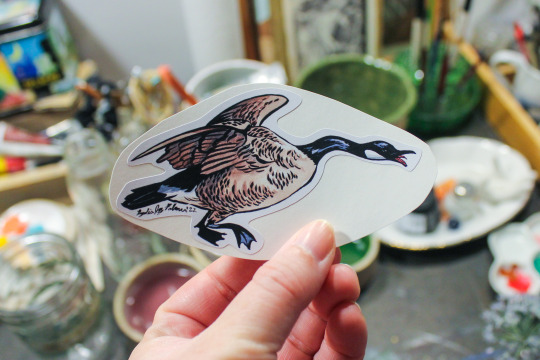

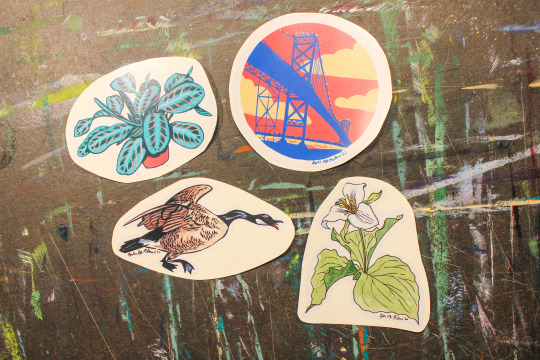

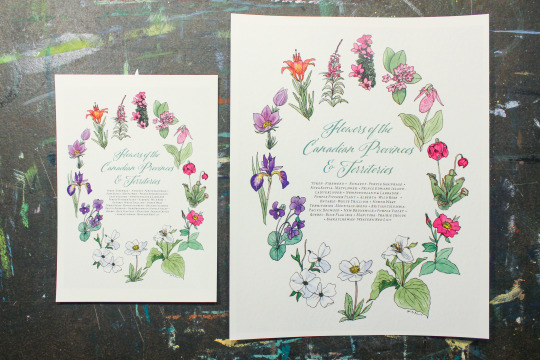



Etsy update! New stickers and prints <3
www.etsy.com/shop/lydiajoypalmer
#canada#canada day#canada goose#snail#ambassador bridge#windsor ontario#rainbow#pride#lgbtq+#cottagecore#plants#flowers#native plants#windsor essex
25 notes
·
View notes
Text

I planted New England asters in the spring, and they’re finally starting to bloom. The jokes on me, because I was thinking about a different variety of aster when I pictured what they would look like. I’m not mad, though, because look at them! They’re so big! They make a lovely colour combo for pollinators beside the Black-eyed Susan.
#roberts-island#personal#cottagecore#farmcore#mine#solarpunk#gardenblr#naturecore#native plants#black eyed susan#New England aster#ontario wildflowers#pollinator garden
13 notes
·
View notes
Text
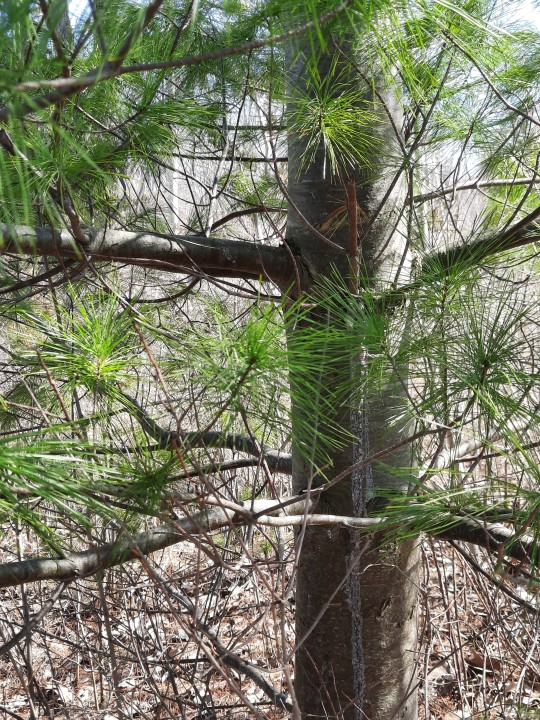
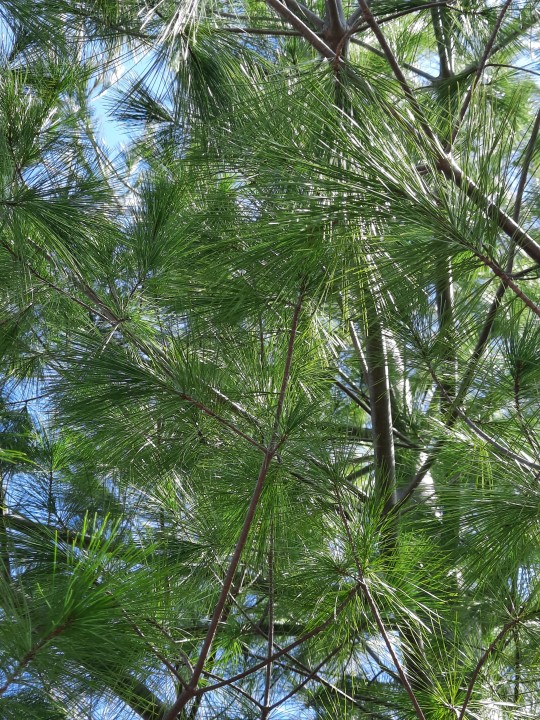


for the life of me I can't figure out what kind of tree this is. I thought *maybe* white pine? But the bark is almost like a shiny silvery colour. Found in southern Ontario, Canada.
3 notes
·
View notes
Photo


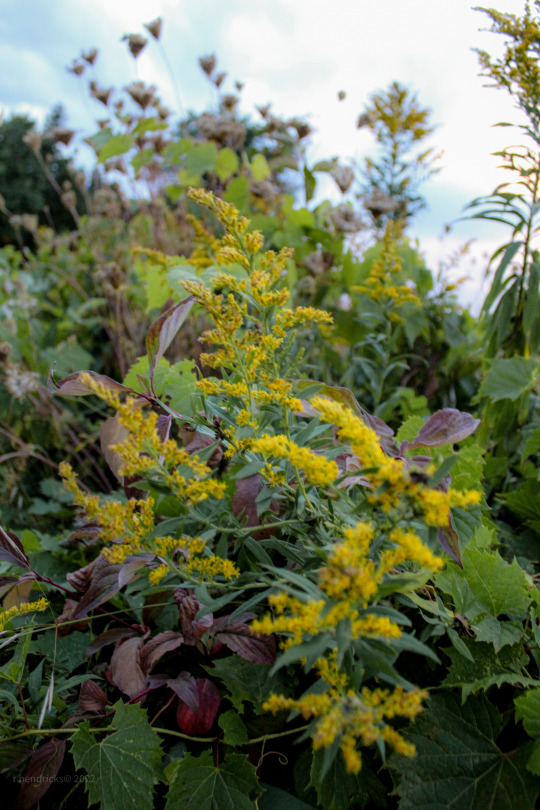
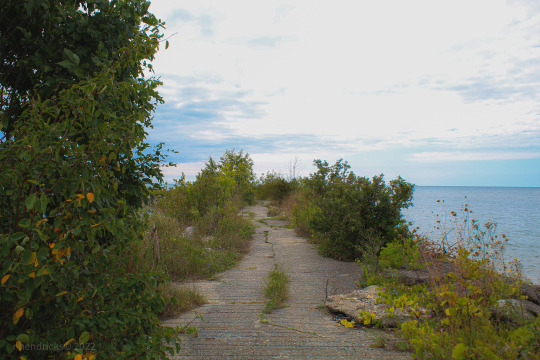


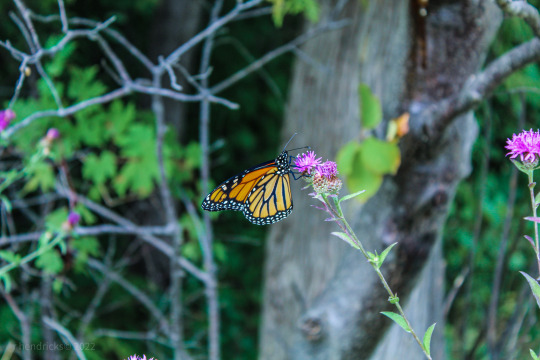
Sauble Beach, Southampton, Baie du Doré
Labour Day 2022
#cottage life#long weekend#lake huron#great lakes#bruce peninsula#ontario#monarch butterfly#native plants#road trip
4 notes
·
View notes
Text
Come for a visit and turn on push notifications to be one of the first folks to read our newest posts on edible and medicinal wild plants! Based in Ontario, Canada
3 notes
·
View notes
Link
June 24, 2022
If you are in the Ottawa area, it may be of interest to you that the Fletcher Wildlife Garden (of the Ottawa Field-Naturalists’ Club/Club des naturalistes d’Ottawa) is having its online plant sale. The price is CA$4 per plant, and the plants are Ontario natives!
I have not purchased from them, but my friends are excited about this, and so I wanted to share.
Link: https://ofnc.ca/fwg-online-plant-sale
#wildflowers of southern ontario#xx#Ottawa Field-Naturalists’ Club#Club des naturalistes d’Ottawa#ottawa#ontario native plants#wildflowers#flowers#gardening#ontario
3 notes
·
View notes
Text
Flower Bed - Landscape

Image of a sizable farmhouse's side yard flower bed in full sun.
#hastings county#flower bed#butterfly garden#picton#permaculture#prince edward county#native ontario plants
0 notes
Text
Flower Bed Landscape

This is an illustration of a sizable, full-sun, side yard flower bed in a farmhouse that can withstand drought.
0 notes
Text
Garden news:
Two orders of plants came in this week! Also got contacted for the other pickup order but they let me know they’d prefer to wait a couple weeks since one of the plants was still pretty small. Not only do I not have any personal experience with that species but they’re literally the only place that carries it so I told them I trust their judgment and I can wait. So I will!
My large toothwort seems to be very happy in my window well and I like that I now have a plant to look at from my basement. Can’t wait to add a fern.
Speaking of which, that order will be coming this weekend or in this coming week.
My wood lilies are coming up! I thought they had died last summer. And I’ve ordered four more...lol Oh well. Judging by my Michigan lilies’ babies I think they must act as a kind of ephemeral when they’re young. Because while the mature Michigan lilies will last in some form pretty much until fall, the babies they made died in the spring last year. I thought I had done something wrong but they came up again this year and are a little bigger this time around. So I guess it’s the same with the wood lilies.
One of the nurseries I ordered from contacted me about a replacement since they didn’t have one of the plants I wanted (it died), which was already a replacement for something else, but that’s okay because I already have that plant and only ordered it again because I didn’t know if it had survived its first winter in my garden (it did!). So I’m getting a species I don’t have that they hadn’t yet marked as available on their website. :) Also they said they’d put me on a waiting list for two other species they carry that I really want and can’t find anywhere else so I’ll be notified as soon as they get them! If they get them this year, which they hopefully will. My common tall sunflowers tried to pull their trick of blending in with the pearly everlasting again, but no! It also sent a shoot up between the sidewalk stones. Because of course it did. I’ve also now realized the difference between the common tall sunflower shoots and the stiff sunflower shoots, so I pulled a bunch of the common tall sunflower shoots because they are bullying the stiff sunflower. You stay on your side! So far the Canada goldenrod I relocated is oddly well-behaved, but I’m sure that won’t be for long.
Something, likely a caterpillar, is eating my purple giant hyssop, but I can’t find the damn thing. It’s probably happening at night. Maybe I’ll go out there with a flashlight this evening. A squirrel dug up one of my squirrel corn bulbs but it’s okay, the plant is cool with it, because sometimes the bulbs have “pups” and the squirrels’ digging loosens and scatters them which allows the plant to spread. And the squirrels don’t actually eat them, so it’s fine.
I think I’ve lost my bigleaf lupine. I hope I’m wrong about that because I got that species entirely by accident when it was supposed to be a sundial lupine (which I now have the real thing). I hope I’m wrong because although it is a native species, most native plant nurseries won’t carry it because it can be got at regular garden centres but the problem there is that they’re nearly always cultivars, and some of those cultivars have turned the plant super aggressive, so it acts like an invasive species even though it isn’t. The one I got by accident was a mixup wherein they were supposed to get sundial lupine and sold it as such, but then the plants grew with too many leaflets and it was obviously not that species. So they let everyone know when they realized and gave out a coupon, but I was overjoyed when they said what it was instead, and this bigleaf lupine was a very well-behaved plant. Anyway, reason I worry is that my sundial lupine in full leaf right now and I don’t remember when the bigleaf lupine emerged in the spring last year but there’s not even a hint of it yet. I dearly hope I’m wrong and it’s just taking its time.
My hopniss, wild yam, bush clovers, and dwarf milkweed aren’t showing any signs of life yet but I don’t know when they’re supposed to so maybe they’re fine. The butterflyweed hasn’t yet either but I don’t expect it to until like July. My buffalo berry is just starting to show signs of life. Thought I’d lost it, but appears not!
Weeds: I finally got to plant a native thistle but that hasn’t stopped the non-native ones from being a nuisance. There’s one in particular that spreads by rhizome. It’s not prickly but it is prolific. I’ve allowed one to stay until it flowers just so I can identify the bloody thing. I’m still pulling up garlic mustard and dog-strangling vine from time to time but I’ve got a good handle on them now. I remember a couple years ago it seemed impossible that I would be able to keep on top of them, but I hardly ever see the dog-strangling vine on the back hill anymore and it’s eventually going to get to the point where they’ll only end up in my garden from the wind blowing the seeds in now and then. Dandelions are dandelions. They don’t hurt anything, there’s just a lot of them. I’ll pull them up from the beds, but not the lawn.
Flowers! My Virginia strawberry is flowering (white) and maybe it’ll make fruit this year. My woodland strawberry is too (white) and will probably make fruit this year since it did last year. My common elderberry has buds (will be white) and will hopefully make more than one fruit this year, the multiple smallflower forget-me-nots (blue) around the yard are in flower, and both Jack-in-the-pulpit plants still have their flowers (striped purple and green). My spicebush is in flower (yellow), all my violets are flowering (purple and white), my tall bluebells have opened their flowers (blue), and my Virginia bluebells are still budding (will be intense blue). My perennial flax is in flower (blue violet) and so is my fragrant sumac (green), my chickweed (white), and my rock cress (white). My thrift seapinks are putting up buds (will be vivid magenta), and my field pussytoes were already in flower (white) when I got it. One of my streamside fleabanes is about to open its bud (likely pink). Both my columbines are blooming (one red and yellow and the other blue and yellow), and my alexanders (yellow) too. My wild geranium has gotten quite sizeable this year and has many flowers (pink). My woodland phlox is going to bloom this year (will be white or blue). My barren strawberry certainly is (yellow). My blueberry that I moved last year has lots of flowers (pale green). My bog rosemary is flowering too (pink) and my tall meadow rue has its flower spike up (will be white I think). My Canada garlic and wild chives are starting to put buds up too (pink). Plenty more to come!
#gardening#native plants#native plant garden#North American native plants#native plants of Ontario#Carolinian zone#edible native plants
6 notes
·
View notes
Text
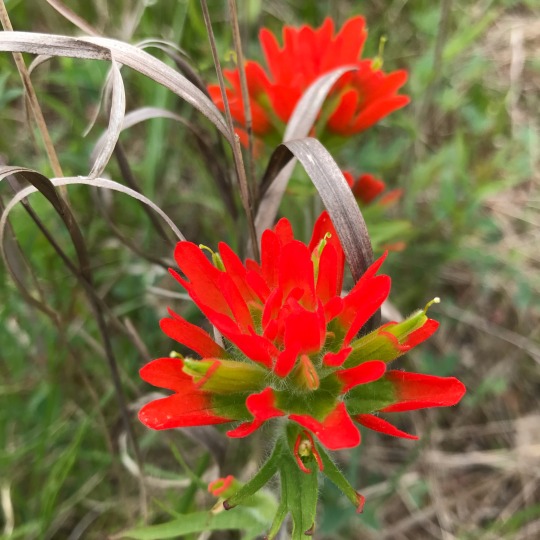
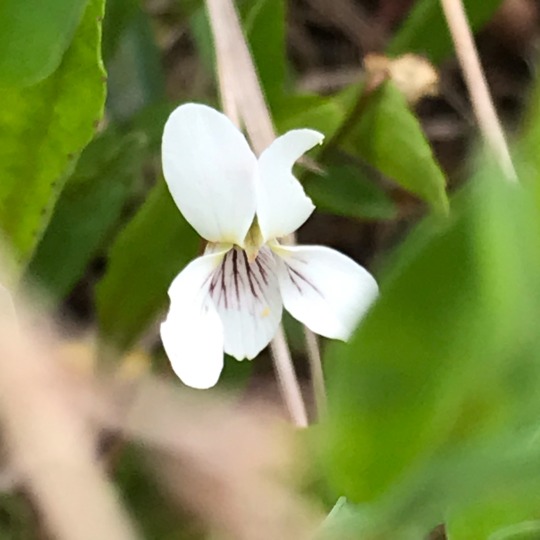


Also of note: first time I’ve seen prairie fire up here, a little sweet wild violet, some wild cousins for my strawberries at home, and I think an owl pellet? (Could also be coyote scat)
Please feel free to correct my ID! I’m trying to learn
#roberts-island#personal#plantblr#naturecore#plant id#nature walk#native plants#ontario wildflowers#georgian bay#owl pellets#cottagecore#violets#prairie fire#wild strawberries
1 note
·
View note
Text
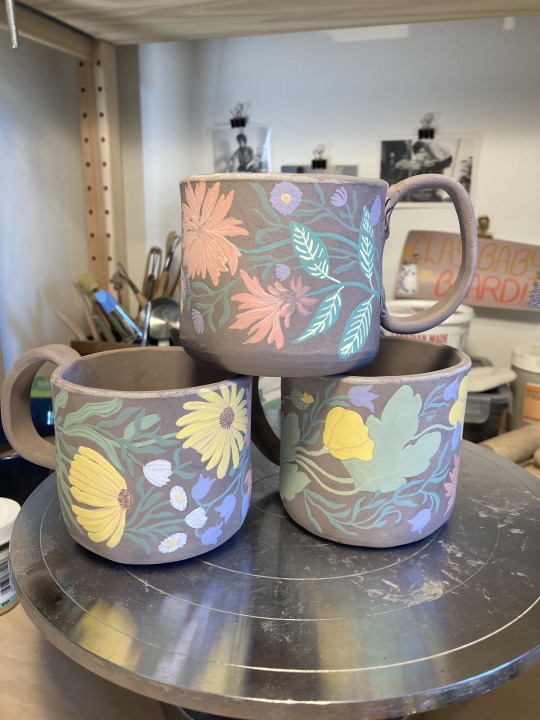

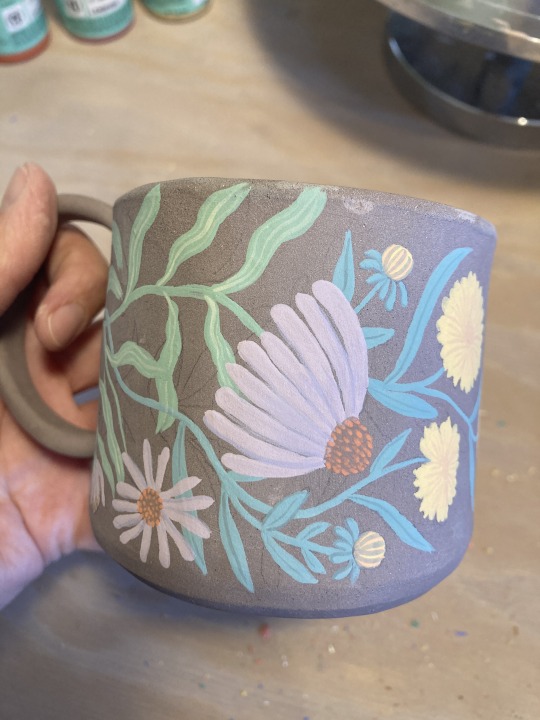


I've developed a passion for native plants the last couple years (since my partner & I got a house with a mostly un-landscaped yard & we started gardening in it) & I thought these black clay mugs were the perfect place to paint some of my favourite native-to-Ontario flowers!
These took FOREVER, but I'm so thrilled with how they turned out - hopefully they fire well & look this vibrant once they're all done!?!
#artblog#ceramicsculpture#ceramicart#handbuiltceramics#sculptures#handbuiltsculpture#pottery#clay#stoneware#sculpting#sculpture#handbuilding#ceramic#ceramics#handbuilt mug
477 notes
·
View notes
Text
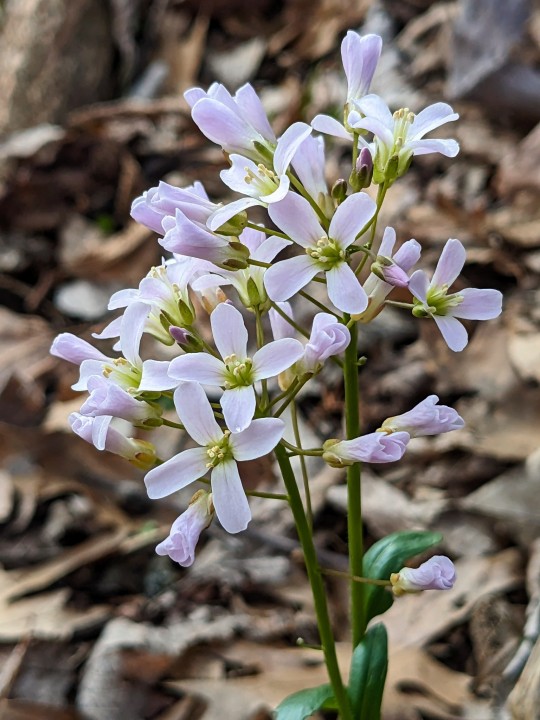

Purple Cress
Cardamine douglassii
Also known as Limestone Cress, this species in the mustard family features clusters of light purple flowers in early spring and can be found in wet and swampy forests with calcium carbonate rich soils. It's native to parts of the eastern United States and southern Ontario, Canada.
The plants I photographed are part of an isolated population remaining in a tiny bottomland forest remnant in St. Charles County, Missouri. Unfortunately, the rest of the forest has been lost due to suburban sprawl and what little of it remains has many invasive species, including winter creeper, callery pear, and japanese honeysuckle trying to encroach from surrounding developments and outcompete native plants like this one.
March 12th & 13th, 2024
St. Charles County, Missouri, USA
Olivia R. Myers
@oliviarosaline
#botany#cardamine douglassii#cardamine#purple cress#bittercress#brassicaceae#nature#naturecore#forest#fairycore#woods#missouri#native plants#native flowers#forests#hiking missouri#suburban sprawl#urban sprawl#ecology#plants#flowers#wildflowers#purple flowers#native plants of america#forest floor#bottomland woods#bottomland forests#nature photography#flower photography#spring
36 notes
·
View notes
Text
One of my favorites that I call my forest herb.

Chimaphila maculata is an evergreen Shrub growing to 0.3 m (1ft) by 0.5 m (1ft 8in) at a slow rate.
Other names are Spotted Wintergreen and Pipsissewa.
Native to Eastern N. America - Illinois to Michigan and Ontario, south to Texas and Georgia.
The plant is analgesic, antibacterial, astringent, diaphoretic, diuretic, febrifuge, rubefacient, stimulant and tonic. The plant has an antiseptic influence on the urinary system and is sometimes used in the treatment of cystitis. An infusion of the plant has been drunk in the treatment of rheumatism and colds. A poultice of the root has been used to treat pain whilst the plant has also been used as a wash on ulcers, scrofula and cancers. All parts of the plant can be used, though only the leaves are officinal. The plant is loaded with the biologically active compounds arbutin, sitosterol and ursolic acid.
#atlanta airbnd experience#herbs#plants#visionarygrowingsolutions#Chimaphila maculata#Spotted Wintergreen#airbnb experience#pipsissewa#atlanta urban ag#maurice small
20 notes
·
View notes
Text
Blog 1: Connected to Nature
Hello, ENVS*3000 friends! I'm Maia, and I am in my third year of Biological Sciences. Welcome to my first blog :)
I would describe my current connection with nature as a profound yet carefree essence. I come from the city, more precisely, North Toronto; I found myself yearning for nature's embrace from a young age, perhaps triggered by its scarcity in my urban surroundings. Recognizing my affinity, my dad, a nature enthusiast, actively fueled my passion through camping adventures, hiking escapades, and shared moments immersed in captivating David Attenborough documentaries. In the midst of a large Italian family, where the majority remained indifferent to the natural world, I stood out as the quiet one, the nature lover, aspiring Dr.-to-be. Amidst this, my dad became my reliable support, sharing the same passion for the great outdoors. His passion for wildlife and landscape photography became a shared pursuit, complete with my very own camera.

Photo of a male wood duck shot by Dino Melissa
Despite a bustling upbringing as a competitive dancer for 17 years—which is not exactly an outdoor sport—I surrounded myself with nature books, my dad's photographs, and nature documentaries. Unfortunately, while balancing a hectic city life, the opportunities for my dad and I’s outdoor adventures diminished over the years. However, as I am maturing and expanding my knowledge, I continuously discovered new ways to appreciate nature and its interconnected web of life - not mosquitoes though…
In my quest to inspire others to view nature through a similar lens as I do, I spent the past summer at a wildlife hospital, manning the front desk. Handling cases ranging from fallen hawks to orphaned baby raccoons to pigeons with string around their feet, I strived to educate callers about wildlife while debunking misconceptions. Some common ones are that pigeons are dirty and will give us diseases, and snakes are evil - spoiler alert, both are very wrong! While not everyone appreciated or grasped the educational aspect—some mistaking us for pest removal—many left with a newfound understanding of Ontario's wildlife. Small changes, after all, contribute to a broader impact of protecting our native species. This job expanded my knowledge - which I still try to share with anyone who will listen - and played a pivotal role in further evolving my relationship with nature.
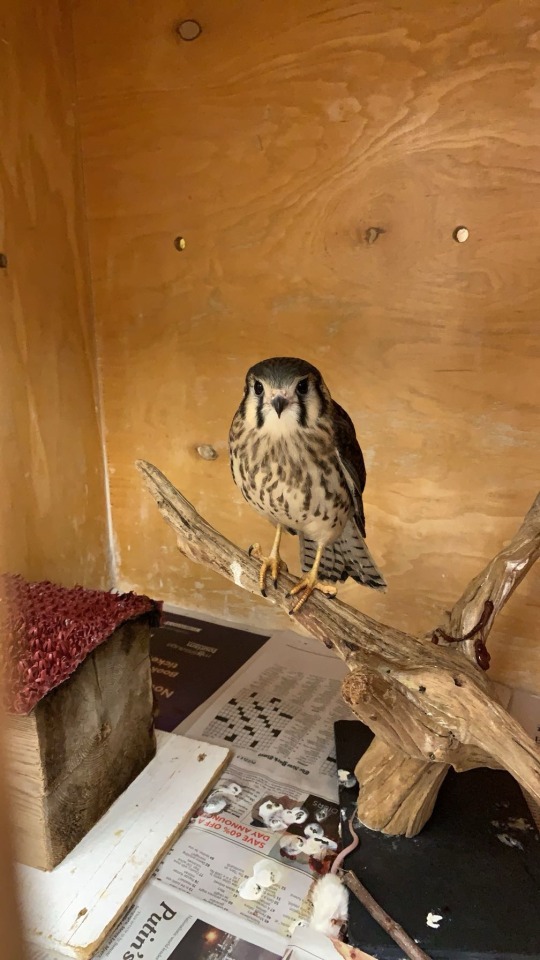
Picture of an American Kestrel
One place that has bestowed upon me a profound sense of place is my cottage—a haven of tranquillity like no other. Nestled on about an acre of land, backing onto a forest, it teems with diverse wildlife such as deer, coyotes, foxes, turkeys, grouse, and a plethora of native plants. Whether quietly observing the tree line or engaging in summer activities like kayaking and hiking, the ambient sounds of water, wind, and nature's symphony create a genuine sense of place; whenever I am there I feel as if I belong there. It's here that I yearn to escape city living permanently, trading it for the allure of a rural plot of land to live off of sustainably.

Picture of the backyard during the winter
The dream of owning a small farm and caring for animals has been a lifelong goal of mine. The charm of sustainable living intertwines with my passion for nature; here is where I hope to coexist in harmony. Through responsible practices and a deep connection with nature, I aim to contribute to the preservation of the natural world, all while feeling a permanent sense of place like no other.
21 notes
·
View notes